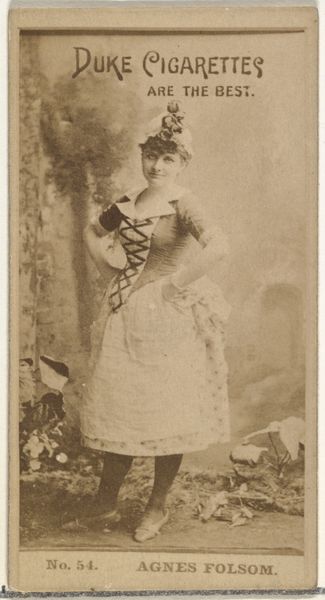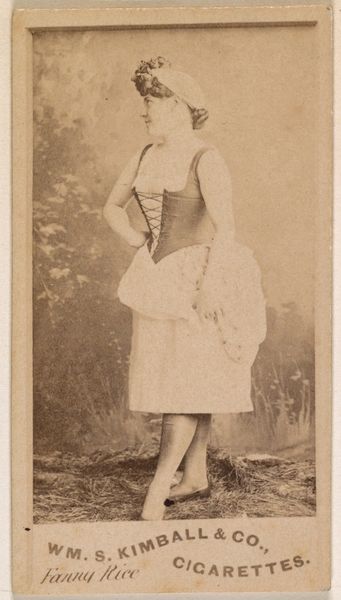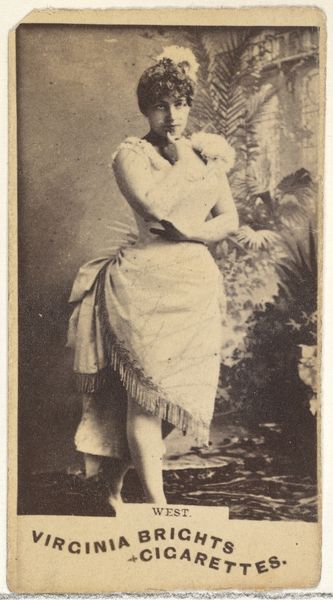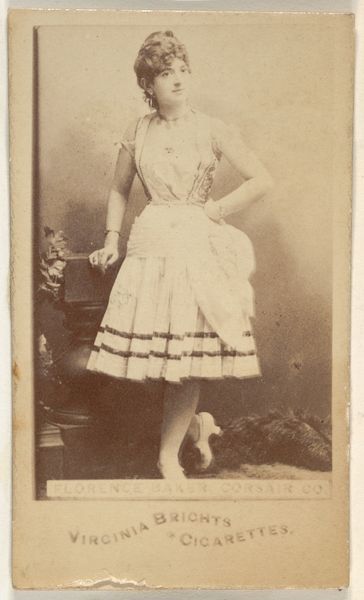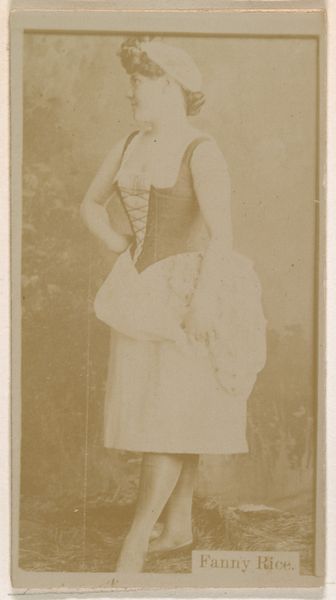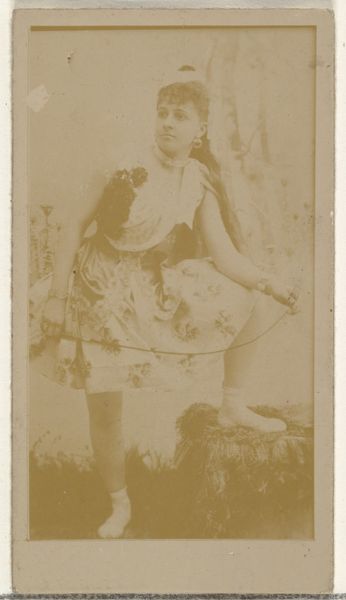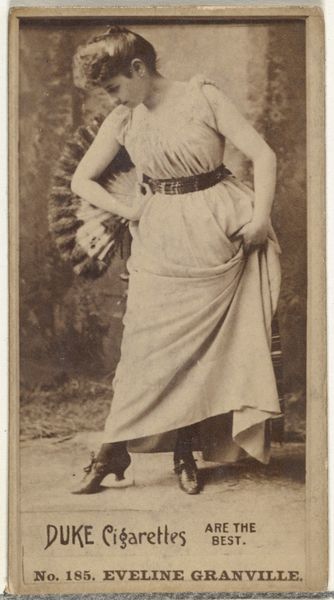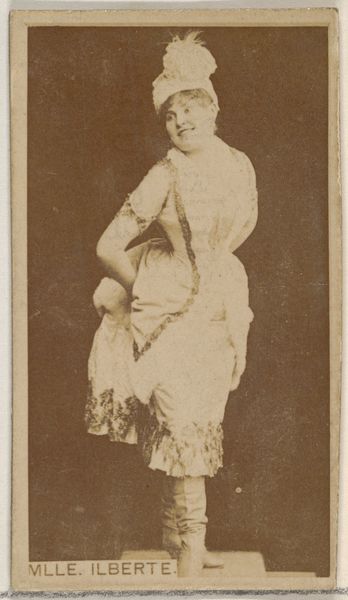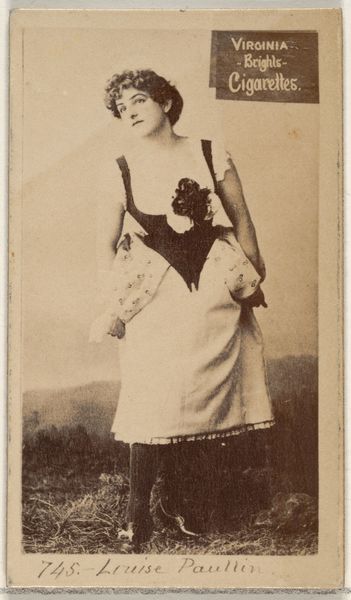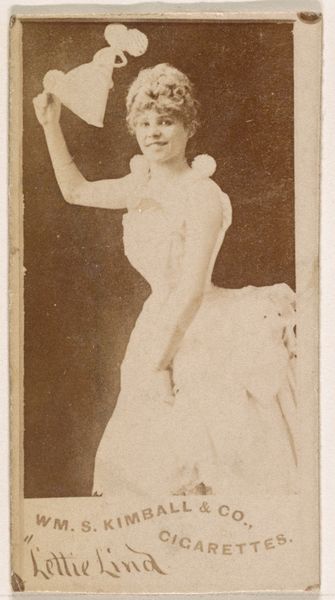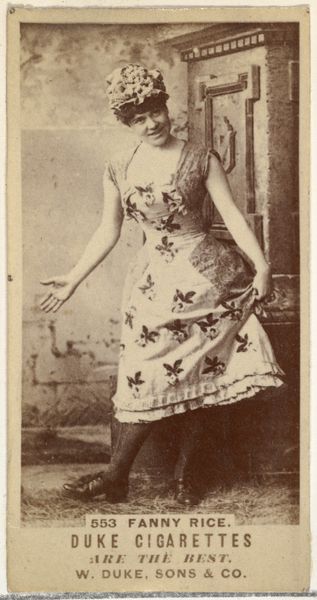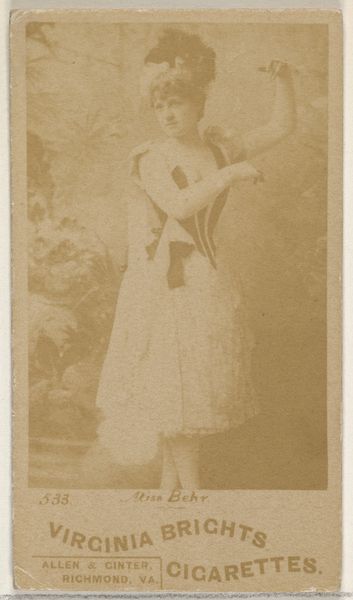
Card Number 769, Fanny Rice, from the Actors and Actresses series (N145-5) issued by Duke Sons & Co. to promote Cameo Cigarettes 1880s
0:00
0:00
drawing, print, photography
#
portrait
#
drawing
# print
#
impressionism
#
photography
#
genre-painting
Dimensions: Sheet: 2 11/16 × 1 3/8 in. (6.8 × 3.5 cm)
Copyright: Public Domain
Curator: Looking at this rather charming little card, it's easy to be transported back to the 1880s. It’s titled "Card Number 769, Fanny Rice," part of the Actors and Actresses series published by Duke Sons & Co. to promote their Cameo Cigarettes. Editor: It has such an interesting sepia tone, a sort of melancholic warmth to it. She almost seems frozen, like a relic from a past performance or some tableau vivant. I'm also struck by the context here - using actresses to sell cigarettes is definitely problematic by today’s standards. Curator: The sepia tone certainly lends it that nostalgic air. Tobacco cards, like these, were immensely popular back then, and the portraits were not only about advertising, but were actually seen as collectible art in their own right, capturing idealized images of femininity for mass consumption. Editor: "Idealized" is such a key word. I'm looking at the way she is posed, the deliberate tilt of the head, the implied sensuality – she's objectified, presented as this attainable beauty linked to the allure of the product. This intersects with discussions about the historical commodification of women in media and advertisement. I want to know more about Fanny Rice herself. Curator: Rice was indeed a very well known stage performer! These portraits, these kinds of symbols helped establish, and reinforce, standards of beauty for an audience eager to see celebrities replicated across all these tiny images. And yes, to some degree this could perpetuate narrow perceptions of what that was supposed to mean, what it would come to signify. Editor: Right, and it’s essential to consider how these representations shaped cultural attitudes. This tiny card acted as a vehicle for delivering a powerful, constructed, message to people through entertainment culture and tobacco consumption, both already potent symbols during that era. Curator: It's funny to think something so seemingly innocuous as a cigarette card held all of that symbolic weight, it acted, it almost seemed, to mirror back desires and ideals within the period. It served both to inspire dreams as well as potentially constrain or bind the people to social norms. Editor: Precisely, art is never made in a vacuum. It becomes fascinating to re-examine it with modern insights and new critical methodologies. It really underscores that tension between the pleasure of consuming art and that ethical obligation of engaging with its socio-political implications. Curator: I absolutely agree. These artifacts become touchstones, opportunities to re-examine shared cultural memories. Editor: Definitely gives one something to chew on, right?
Comments
No comments
Be the first to comment and join the conversation on the ultimate creative platform.

